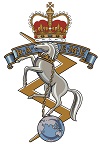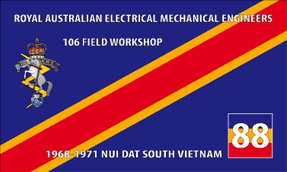1968
First FRT Engine Change.
(Four men and a flashlight)
John Putland, Ex WO2 Art.Veh, 1968-1969
I had come to 106 from the 1st.Armd. Regiment LAD at Pucka.punyal. When I went on pre-em leave I was destined for the yet to be formed Armd. Sqn. LAD. Alas, while I wasn't watching, Dennis Kerr slipped under my guard, so 106 became my home instead.
For the first couple of weeks I was overseer to a group of guys laying sandbags and erecting tents. Then, one November afternoon, a sudden urgency permeated the area. "Get your team together, there is a tank in the bush needing an engine change, The Tankie truck will be here in 2 hours to pick up your group and the new engine"
Me and my crew, Hell! I didn't even know I had one. We hadn't even been issued with tool kits. I hunted around, found three guys who looked like they might know where a tank kept its engine and after a lot of feverish running about the four of us plus the engine were on our way to FSB Julia. Here we were welcomed with open arms by the tank squadron Tech.Officer, little did he know what sparse experience we had, Cpl Gavin Bicknell and myself had witnessed/assisted the "old dodderer", Cpl. Frank Owen, in the removal of an engine at Pucka. But, that was the sum total of our expertise.
FSB Julia proved to be just an overnight halt and next morning the group and engine transferred to a Yank Tracked Load Carrier to go deeper into the bush.
While waiting for the transfer I noticed a Yank "grunt" come in through the wire busily ejecting every round in his M16 into the dirt and not stopping to pick them up. (I later found out that to many Yanks a weapon was not "Safe" unless it had no ammo in it). This didn't fill me with confidence as we were to place ourselves in the tender care of the Americans for the balance of the trip.
We arrived at our destination latish in the morning to be told that the tank would be required by 1100hrs the following day and that we had approval to work through the night. That, in itself, raised some problems; we had only a single torch between us.
We battled gamely through the night, get the torch, identify what it was you wanted to work on and hand the torch on to the next man. The real fun started when we tried to put the new engine back in. One of the mounting bolts was bent and because they are captive in the water rail there was no way to straighten it. Someone, me as it turned out, had to get under the tank and attempt to guide the bolt into position.
No big deal you say, I agree but, it was dark and the tank crew had dropped 33 gallons of water and 13 gals. of oil right where I wanted to be. We eventually succeeded in bedding the engine down and the rest of the installation went smoothly. Funny thing though, when we were finished I counted 35 assorted bolts, nuts and washers we hadn't found a home for. Everything worked so we decided that the Centurion was obviously over engineered.
Job over in 22hrs.( I was later to take part in an engine change with a practiced crew in daylight in 10.5 hrs). We threw our tool kits into the engine box along with the duff engine and bummed a chopper ride back to 106.
The OC, Maj. Hicks-Hall, was kind enough to say well done and to authorize a new issue of working dress ( I'm surprised the RAAF even let us into their chopper in the state we were in).
So endeth the saga of the first FRT. We learnt a lot about preparedness and to my knowledge were never caught out again. I took part in about ten engine changes while at 106 but the first remains strongest in my memory.

